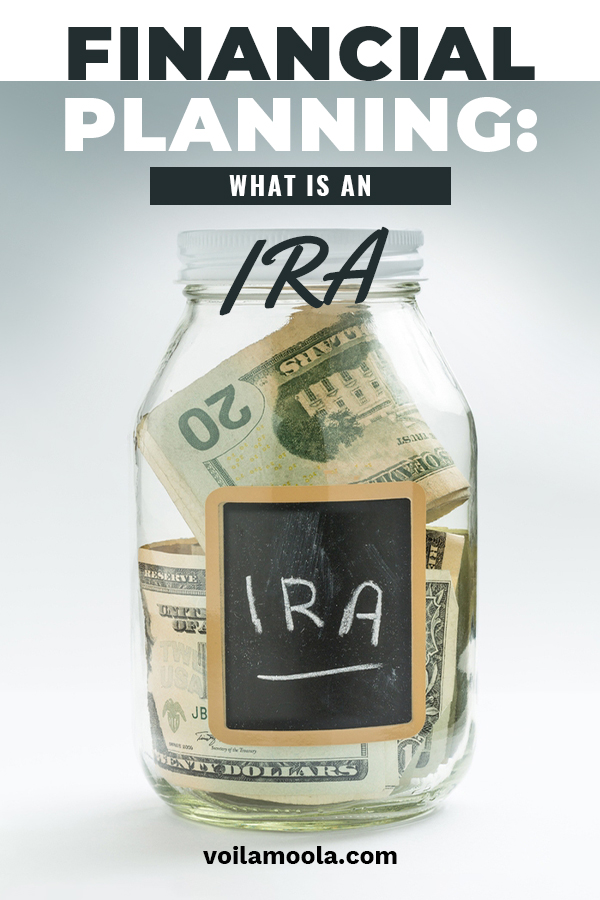At Voila Moola, we are always interested in helping our readers understand more about financial planning. When you think about planning for your future retirement, do you understand the ins and outs of an IRA account? Today we’re diving into the world of IRAs to make it a little easier.

Financial Planning: What Is An IRA?
IRA stands for Individual Retirement Account, and “Individual” really is a keyword here. Unlike a 401k that may be offered through an employer, an IRA is an account you can set up on your own, at any bank or financial institution that offers it. An IRA is purely for retirement savings, and offers clear tax benefits for contributing to it no matter which type of IRA you select.

Regardless of how much money they make, anyone can contribute to an IRA with earned income. For a traditional IRA account, you have the ability to deduct your yearly contributions on your tax return. Basically, every year that you make a contribution to your traditional IRA account, you reduce your taxable income by the amount of your contribution. Note that the amount of the deduction you can take may be limited if you or your spouse have a retirement plan through an employer.
The money in your traditional IRA grows tax-deferred. This means that you won’t owe taxes on it until you withdraw from it. You need to be at least 59 1/2 to withdraw the money from your traditional IRA without penalty.

Roth IRA
The main difference between a Roth and a traditional IRA is when you get the tax-break. Roth contributions are not tax-deductible like a traditional IRA. But the money grows tax-free, You will never owe taxes on any gains in your Roth IRA account.
Perhaps what is most attractive about the Roth IRA is that your qualified withdrawals are not taxed! There are limits placed on higher-income earners, and some are not eligible for a Roth IRA.
If your income exceeds allowable Roth IRA limits, you can legally get around it by first opening a traditional IRA. Later on, you can convert your traditional IRA to a Roth. This is best if your traditional IRA consists only of non-deductible contributions, otherwise you can get hit with a tax bill.

Spousal IRA
If you are a spouse with no earned income, you can build your own retirement through a Spousal IRA account. This allows you to contribute to either a traditional or Roth IRA, based on your spouse’s income. Maximum contributions to either type of Spousal IRA cannot exceed $6000, or $7000 if you are 50 and older.
In your retirement and financial planning, take a serious look at starting an IRA account. If your income doesn’t exceed the limits and you’re willing to wait for that tax break, the Roth IRA is a great way to go!

Leave a Reply